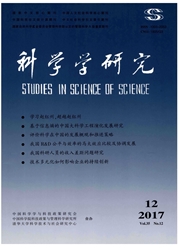

 中文摘要:
中文摘要:
根据R&D投资的阶段性特征,将企业R&D投资分为研究(基础与应用研究)与试验开发两种异质性投资。基于企业经济类型、资本密集度与上市板块的差异,按融资约束程度对企业进行分类,利用2007-2013年中国制造业上市公司面板数据,研究金融部门资金和政府补贴两种不同渠道资金对企业异质性R&D的影响,发现:政府补贴对企业R&D投资的综合促进作用要强于金融部门资金的作用;两类外部渠道资金对企业R&D投资的促进作用主要体现在试验开发阶段,对研究阶段的作用不明显;政府补贴缓解融资约束,对受融资约束较高的企业(主要包括私营企业和创新型企业)R&D投资的激励作用更大。解决目前企业基础与应用研究投资严重不足的关键是金融功能升级,实现政府、金融部门在研发资金配置不同阶段的合理分工,提高资金配置效率。
 英文摘要:
英文摘要:
According to the stage characteristics of R&D investment, we divide it into two kinds: research investment ( R, including basic and applied research) and experimental development investment(D). By using the panel data of China' s listed manufacturing companies, we divide them into different financing constraint categories and study on the effects of financial capital and government subsidy on two kinds of R&D investment. We get the conclusions that: The comprehensive promoting effects of government subsidy on R&D investment is higher than that of financial capital on it; The promoting effects of the two kinds of external financing on the experi- mental development investment is prominent, but the promoting effects of them on the research investment are not prominent ; The posi- tive effects of government subsidy in easing the financing constraints are more effective on private and innovative enterprises. The key to solving the problem of the shortage of the enterprises' investment on basic and applied research is to upgrading the financial function and improving the capital allocation efficiency.
 同期刊论文项目
同期刊论文项目
 同项目期刊论文
同项目期刊论文
 期刊信息
期刊信息
